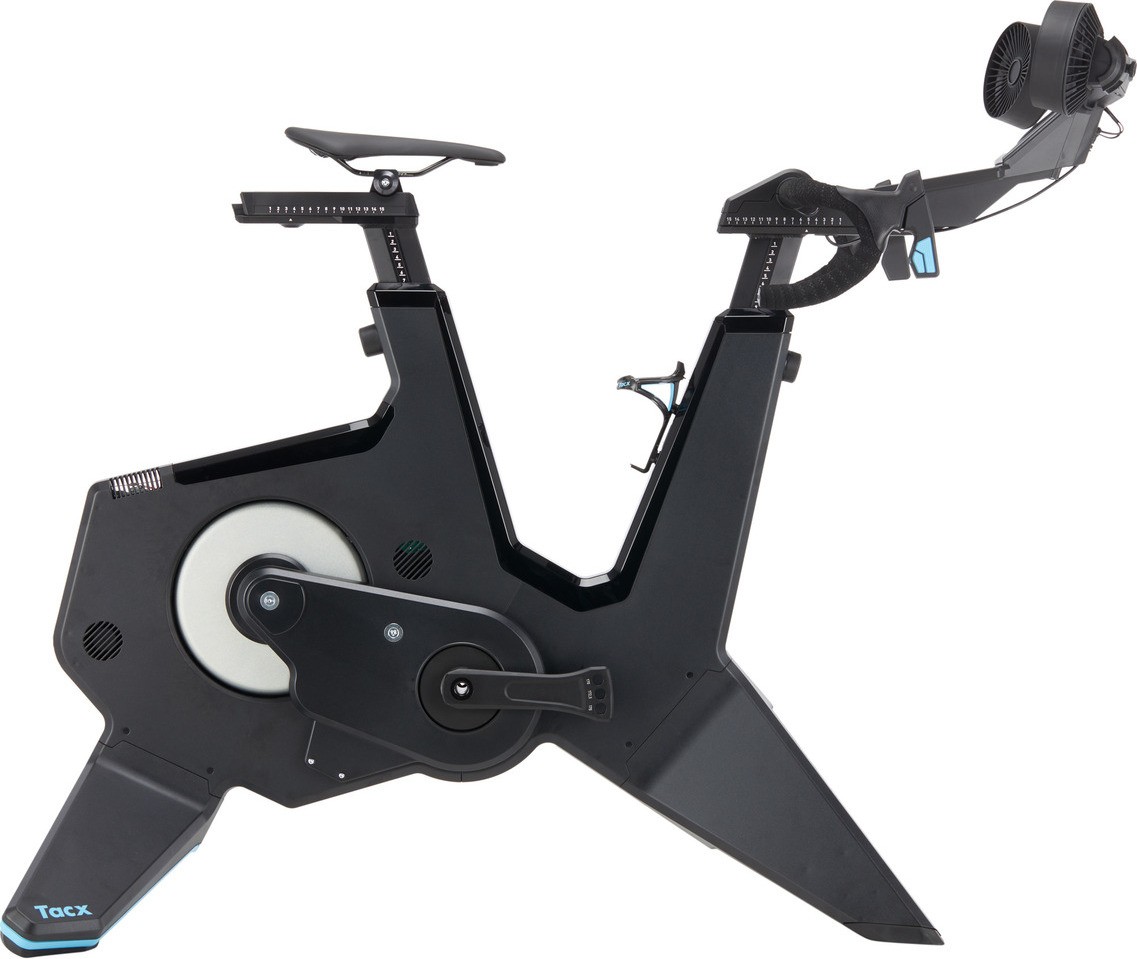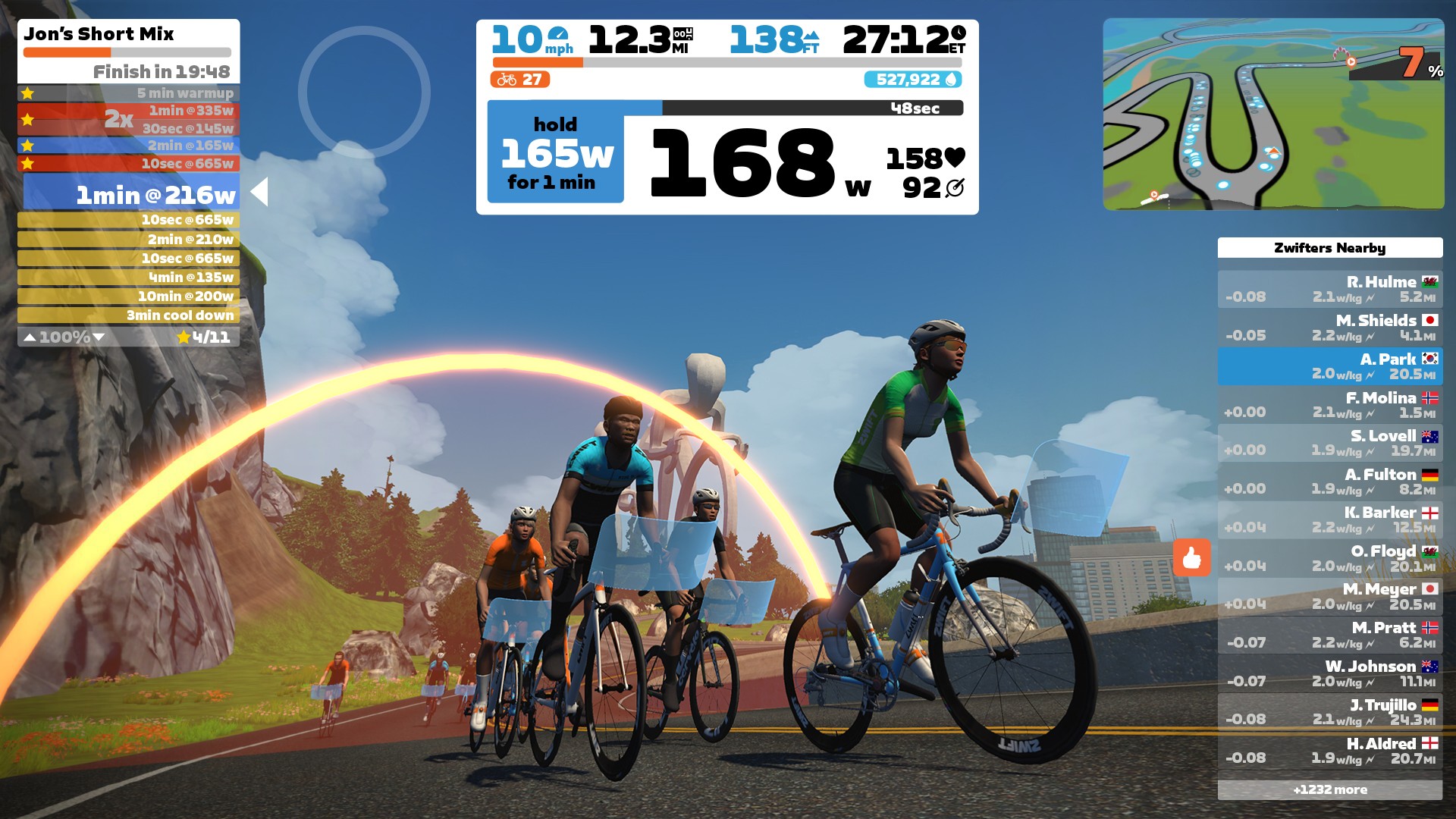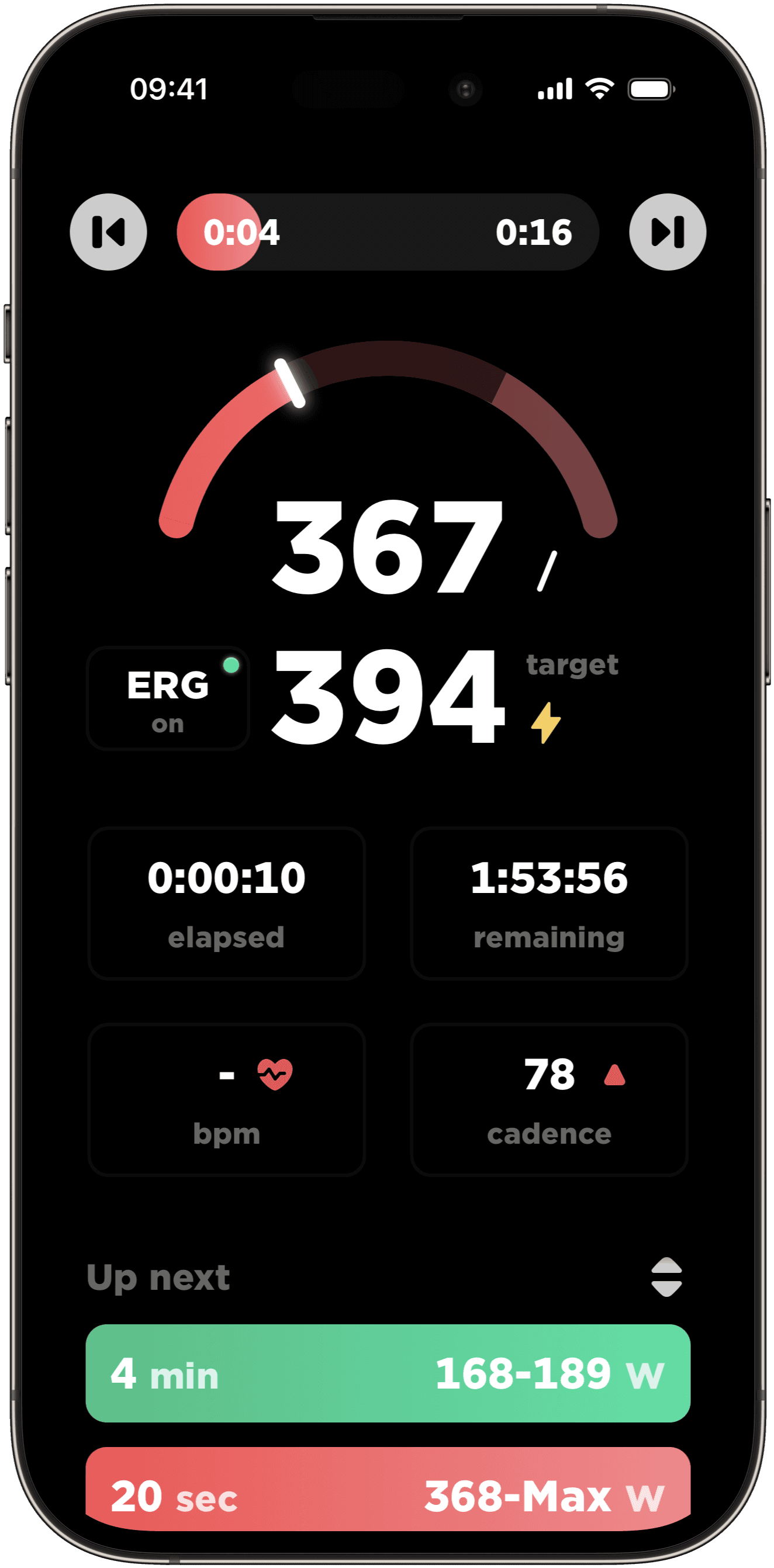Indoor Cycling Tips: The Ultimate Guide to Biking without Leaving Home

Oct 23, 2023

Indoor Cycling Tips: The Ultimate Guide to Biking without Leaving Home
Oct 23, 2023

Indoor Cycling Tips: The Ultimate Guide to Biking without Leaving Home

Oct 23, 2023

5 Tips for Indoor Cycling Training
Indoor cycling has surged in popularity over the past few years, offering cyclists a way to train effectively regardless of weather conditions, and providing fitness enthusiasts a convenient way to engage in heart-pumping workouts. Whether you're preparing for a race or just trying to stay in shape, understanding indoor cycling essentials can optimize your experience.
1. The Appeal of Indoor Cycling
Before diving into equipment and software, it’s worth understanding why indoor cycling attracts so many. Here are a few reasons:
Consistency: Unlike outdoor cycling, indoor rides aren't affected by rain, snow, or traffic.
Safety: There's no risk of accidents with cars or other unforeseen road hazards.
Structured Workouts: Indoors, every pedal stroke counts. This controlled environment is perfect for targeted, effective training sessions.
The possibility of using the ERG mode. This does also have its downsides. We explain all about that in this article.
2. Trainers: Your Indoor Cycling Foundation
Indoor cycling requires a stationary setup, and that's where trainers come in. Here's a breakdown of the major types:
Wind/Magnetic/Fluid Trainers: These are the most basic and least expensive trainers. They provide resistance using a fan, a magnetic flywheel or fluid resistance. Wind trainers can be noisy and offer less realistic road feel. Magnetic and fluid trainers are quitter and have a smoother road-like feel.
Direct Drive Trainers: These are the top-of-the-line when it comes to non-smart trainers. You remove your bike's rear wheel and connect it directly to the trainer. They provide accurate resistance and are quieter than most.
Smart Trainers: These trainers can connect to devices and apps, adjusting resistance based on virtual terrains or training programs. They offer the most interactive and dynamic indoor cycling experience. Most of the Direct Drive trainers are also Smart Trainers.

We recommend to go for a direct drive smart trainer. You can get a Zwift Hub nowadays for less than the price of a (high-end) helmet. But also Tacx (a Garmin Company) and Wahoo offer a wide ranch of great high-end to less expensive direct drive smart trainers.
Also up for consideration is a home trainer without the need to put your outdoor bike indoors. It’s more like a trainer with the complete bike attached to it. The Tacx Neobike, Atom Wattbike or Wahoo Kickr bike are really the top of the line and you never have to bring your bike inside again, but they do come with a price tag.
3. Software Platforms: Enhancing the Indoor Ride
Modern indoor cycling isn't just about pedaling in place. Software platforms have revolutionized the experience by offering virtual worlds, structured workouts, and social connectivity. Here are some popular ones:

JOIN Workout Player: And of course you can connect the JOIN Cycling App also directly to your trainer. This is the fastest and most efficient way to get you going.
Zwift: One of the most popular platforms, Zwift offers a multiplayer online experience. You can ride in virtual worlds, join group rides, races, and even follow structured training programs. The software adjusts the resistance on your smart trainer to match the terrain.
TrainerRoad: Focused on structured training, TrainerRoad provides science-based training plans to help cyclists achieve specific fitness goals. It's less about virtual worlds and more about efficient, effective workouts.
Rouvy: Offering real-world routes, Rouvy uses augmented reality to let you ride on real courses while staying indoors. It's great for those who prefer real-world visuals over game-like environments.
SYSTEM/Sufferfest: This platform of Wahoo provides structured workouts with a mix of humor and high intensity. Videos, music, and storylines make tough workouts more engaging.
4. Setting Up Your Indoor Cycling Space
Once you've chosen your trainer and software platform, it's time to set up your space. Here are a few considerations:
Ventilation: Indoor cycling can get sweaty. Ensure you have good ventilation or fans.
Floor Protection: A mat under your trainer can protect the floor and reduce noise.
Bike Protection: If you cherish the varnish and bolts of your bike, we recommend a towel over your cockpit and frame because the sweat can be pretty aggressive.
Entertainment: Consider setting up near a TV or computer for easy access to your chosen platform. Be aware that following a complicated series is quite challenging during a Vo2max workout.
Hydration & Towels: Keep water and towels within reach. We have a complete guide about what to drink and eat when indoor cycling here.
5. Reasons your power might be lower indoors compared to outdoors
With all the information above. You’re set to go. However some of you might experience some trouble in hitting the same power numbers indoors as outdoor. This is actually a well known phenomenon for which multiple reasons, or a combination of all of them, can be the root.

Different Power Meters
It's essential to note that not all power meters measure the same. There could be a discrepancy between the power readings on your bike and that of your smart trainer. Ensure you calibrate your power meter before starting your training to achieve the most accurate readings.
Temperature Fluctuations
Indoor training can lead to significant temperature variations, affecting your performance. For instance, the lack of wind and airflow can cause your body to dehydrate. Even a mild dehydration of just 1% of your body weight can result in an average 5.8% performance decline in a 5 km uphill time trial. Ensure good ventilation during your indoor training sessions and keep ample hydration within reach.
Static Cycling Movement
Another crucial factor is the nature of cycling on a smart trainer, which differs from outdoor cycling. Indoors, you often engage the same muscle groups more statically, while outdoor cycling is more dynamic, allowing various muscles brief resting periods in different positions. This difference can cause discomfort or even pain, especially during standing sprints. In such cases, a rocker plate can be a solution to enhance the cycling motion.
Mental Aspect
The absence of wind and real-world speed during indoor training can also pose a mental challenge. Cycling in a virtual world without the feel of fresh air and changing landscapes can be demotivating. Being in a slow-moving virtual peloton can also be discouraging at times. It's vital to be mentally prepared for indoor training and find motivation to bring out your best.
With this information you should be ready to hit to virtual slopes of Zwift or follow your structured workout in the JOIN Cycling app on your Tacx or Wahoo trainer. Whatever you prefer there isn’t a proper excuse anymore to be slacking in the winter months. Because remember progress is all about consistency!
5 Tips for Indoor Cycling Training
Indoor cycling has surged in popularity over the past few years, offering cyclists a way to train effectively regardless of weather conditions, and providing fitness enthusiasts a convenient way to engage in heart-pumping workouts. Whether you're preparing for a race or just trying to stay in shape, understanding indoor cycling essentials can optimize your experience.
1. The Appeal of Indoor Cycling
Before diving into equipment and software, it’s worth understanding why indoor cycling attracts so many. Here are a few reasons:
Consistency: Unlike outdoor cycling, indoor rides aren't affected by rain, snow, or traffic.
Safety: There's no risk of accidents with cars or other unforeseen road hazards.
Structured Workouts: Indoors, every pedal stroke counts. This controlled environment is perfect for targeted, effective training sessions.
The possibility of using the ERG mode. This does also have its downsides. We explain all about that in this article.
2. Trainers: Your Indoor Cycling Foundation
Indoor cycling requires a stationary setup, and that's where trainers come in. Here's a breakdown of the major types:
Wind/Magnetic/Fluid Trainers: These are the most basic and least expensive trainers. They provide resistance using a fan, a magnetic flywheel or fluid resistance. Wind trainers can be noisy and offer less realistic road feel. Magnetic and fluid trainers are quitter and have a smoother road-like feel.
Direct Drive Trainers: These are the top-of-the-line when it comes to non-smart trainers. You remove your bike's rear wheel and connect it directly to the trainer. They provide accurate resistance and are quieter than most.
Smart Trainers: These trainers can connect to devices and apps, adjusting resistance based on virtual terrains or training programs. They offer the most interactive and dynamic indoor cycling experience. Most of the Direct Drive trainers are also Smart Trainers.

We recommend to go for a direct drive smart trainer. You can get a Zwift Hub nowadays for less than the price of a (high-end) helmet. But also Tacx (a Garmin Company) and Wahoo offer a wide ranch of great high-end to less expensive direct drive smart trainers.
Also up for consideration is a home trainer without the need to put your outdoor bike indoors. It’s more like a trainer with the complete bike attached to it. The Tacx Neobike, Atom Wattbike or Wahoo Kickr bike are really the top of the line and you never have to bring your bike inside again, but they do come with a price tag.
3. Software Platforms: Enhancing the Indoor Ride
Modern indoor cycling isn't just about pedaling in place. Software platforms have revolutionized the experience by offering virtual worlds, structured workouts, and social connectivity. Here are some popular ones:

JOIN Workout Player: And of course you can connect the JOIN Cycling App also directly to your trainer. This is the fastest and most efficient way to get you going.
Zwift: One of the most popular platforms, Zwift offers a multiplayer online experience. You can ride in virtual worlds, join group rides, races, and even follow structured training programs. The software adjusts the resistance on your smart trainer to match the terrain.
TrainerRoad: Focused on structured training, TrainerRoad provides science-based training plans to help cyclists achieve specific fitness goals. It's less about virtual worlds and more about efficient, effective workouts.
Rouvy: Offering real-world routes, Rouvy uses augmented reality to let you ride on real courses while staying indoors. It's great for those who prefer real-world visuals over game-like environments.
SYSTEM/Sufferfest: This platform of Wahoo provides structured workouts with a mix of humor and high intensity. Videos, music, and storylines make tough workouts more engaging.
4. Setting Up Your Indoor Cycling Space
Once you've chosen your trainer and software platform, it's time to set up your space. Here are a few considerations:
Ventilation: Indoor cycling can get sweaty. Ensure you have good ventilation or fans.
Floor Protection: A mat under your trainer can protect the floor and reduce noise.
Bike Protection: If you cherish the varnish and bolts of your bike, we recommend a towel over your cockpit and frame because the sweat can be pretty aggressive.
Entertainment: Consider setting up near a TV or computer for easy access to your chosen platform. Be aware that following a complicated series is quite challenging during a Vo2max workout.
Hydration & Towels: Keep water and towels within reach. We have a complete guide about what to drink and eat when indoor cycling here.
5. Reasons your power might be lower indoors compared to outdoors
With all the information above. You’re set to go. However some of you might experience some trouble in hitting the same power numbers indoors as outdoor. This is actually a well known phenomenon for which multiple reasons, or a combination of all of them, can be the root.

Different Power Meters
It's essential to note that not all power meters measure the same. There could be a discrepancy between the power readings on your bike and that of your smart trainer. Ensure you calibrate your power meter before starting your training to achieve the most accurate readings.
Temperature Fluctuations
Indoor training can lead to significant temperature variations, affecting your performance. For instance, the lack of wind and airflow can cause your body to dehydrate. Even a mild dehydration of just 1% of your body weight can result in an average 5.8% performance decline in a 5 km uphill time trial. Ensure good ventilation during your indoor training sessions and keep ample hydration within reach.
Static Cycling Movement
Another crucial factor is the nature of cycling on a smart trainer, which differs from outdoor cycling. Indoors, you often engage the same muscle groups more statically, while outdoor cycling is more dynamic, allowing various muscles brief resting periods in different positions. This difference can cause discomfort or even pain, especially during standing sprints. In such cases, a rocker plate can be a solution to enhance the cycling motion.
Mental Aspect
The absence of wind and real-world speed during indoor training can also pose a mental challenge. Cycling in a virtual world without the feel of fresh air and changing landscapes can be demotivating. Being in a slow-moving virtual peloton can also be discouraging at times. It's vital to be mentally prepared for indoor training and find motivation to bring out your best.
With this information you should be ready to hit to virtual slopes of Zwift or follow your structured workout in the JOIN Cycling app on your Tacx or Wahoo trainer. Whatever you prefer there isn’t a proper excuse anymore to be slacking in the winter months. Because remember progress is all about consistency!
5 Tips for Indoor Cycling Training
Indoor cycling has surged in popularity over the past few years, offering cyclists a way to train effectively regardless of weather conditions, and providing fitness enthusiasts a convenient way to engage in heart-pumping workouts. Whether you're preparing for a race or just trying to stay in shape, understanding indoor cycling essentials can optimize your experience.
1. The Appeal of Indoor Cycling
Before diving into equipment and software, it’s worth understanding why indoor cycling attracts so many. Here are a few reasons:
Consistency: Unlike outdoor cycling, indoor rides aren't affected by rain, snow, or traffic.
Safety: There's no risk of accidents with cars or other unforeseen road hazards.
Structured Workouts: Indoors, every pedal stroke counts. This controlled environment is perfect for targeted, effective training sessions.
The possibility of using the ERG mode. This does also have its downsides. We explain all about that in this article.
2. Trainers: Your Indoor Cycling Foundation
Indoor cycling requires a stationary setup, and that's where trainers come in. Here's a breakdown of the major types:
Wind/Magnetic/Fluid Trainers: These are the most basic and least expensive trainers. They provide resistance using a fan, a magnetic flywheel or fluid resistance. Wind trainers can be noisy and offer less realistic road feel. Magnetic and fluid trainers are quitter and have a smoother road-like feel.
Direct Drive Trainers: These are the top-of-the-line when it comes to non-smart trainers. You remove your bike's rear wheel and connect it directly to the trainer. They provide accurate resistance and are quieter than most.
Smart Trainers: These trainers can connect to devices and apps, adjusting resistance based on virtual terrains or training programs. They offer the most interactive and dynamic indoor cycling experience. Most of the Direct Drive trainers are also Smart Trainers.

We recommend to go for a direct drive smart trainer. You can get a Zwift Hub nowadays for less than the price of a (high-end) helmet. But also Tacx (a Garmin Company) and Wahoo offer a wide ranch of great high-end to less expensive direct drive smart trainers.
Also up for consideration is a home trainer without the need to put your outdoor bike indoors. It’s more like a trainer with the complete bike attached to it. The Tacx Neobike, Atom Wattbike or Wahoo Kickr bike are really the top of the line and you never have to bring your bike inside again, but they do come with a price tag.
3. Software Platforms: Enhancing the Indoor Ride
Modern indoor cycling isn't just about pedaling in place. Software platforms have revolutionized the experience by offering virtual worlds, structured workouts, and social connectivity. Here are some popular ones:

JOIN Workout Player: And of course you can connect the JOIN Cycling App also directly to your trainer. This is the fastest and most efficient way to get you going.
Zwift: One of the most popular platforms, Zwift offers a multiplayer online experience. You can ride in virtual worlds, join group rides, races, and even follow structured training programs. The software adjusts the resistance on your smart trainer to match the terrain.
TrainerRoad: Focused on structured training, TrainerRoad provides science-based training plans to help cyclists achieve specific fitness goals. It's less about virtual worlds and more about efficient, effective workouts.
Rouvy: Offering real-world routes, Rouvy uses augmented reality to let you ride on real courses while staying indoors. It's great for those who prefer real-world visuals over game-like environments.
SYSTEM/Sufferfest: This platform of Wahoo provides structured workouts with a mix of humor and high intensity. Videos, music, and storylines make tough workouts more engaging.
4. Setting Up Your Indoor Cycling Space
Once you've chosen your trainer and software platform, it's time to set up your space. Here are a few considerations:
Ventilation: Indoor cycling can get sweaty. Ensure you have good ventilation or fans.
Floor Protection: A mat under your trainer can protect the floor and reduce noise.
Bike Protection: If you cherish the varnish and bolts of your bike, we recommend a towel over your cockpit and frame because the sweat can be pretty aggressive.
Entertainment: Consider setting up near a TV or computer for easy access to your chosen platform. Be aware that following a complicated series is quite challenging during a Vo2max workout.
Hydration & Towels: Keep water and towels within reach. We have a complete guide about what to drink and eat when indoor cycling here.
5. Reasons your power might be lower indoors compared to outdoors
With all the information above. You’re set to go. However some of you might experience some trouble in hitting the same power numbers indoors as outdoor. This is actually a well known phenomenon for which multiple reasons, or a combination of all of them, can be the root.

Different Power Meters
It's essential to note that not all power meters measure the same. There could be a discrepancy between the power readings on your bike and that of your smart trainer. Ensure you calibrate your power meter before starting your training to achieve the most accurate readings.
Temperature Fluctuations
Indoor training can lead to significant temperature variations, affecting your performance. For instance, the lack of wind and airflow can cause your body to dehydrate. Even a mild dehydration of just 1% of your body weight can result in an average 5.8% performance decline in a 5 km uphill time trial. Ensure good ventilation during your indoor training sessions and keep ample hydration within reach.
Static Cycling Movement
Another crucial factor is the nature of cycling on a smart trainer, which differs from outdoor cycling. Indoors, you often engage the same muscle groups more statically, while outdoor cycling is more dynamic, allowing various muscles brief resting periods in different positions. This difference can cause discomfort or even pain, especially during standing sprints. In such cases, a rocker plate can be a solution to enhance the cycling motion.
Mental Aspect
The absence of wind and real-world speed during indoor training can also pose a mental challenge. Cycling in a virtual world without the feel of fresh air and changing landscapes can be demotivating. Being in a slow-moving virtual peloton can also be discouraging at times. It's vital to be mentally prepared for indoor training and find motivation to bring out your best.
With this information you should be ready to hit to virtual slopes of Zwift or follow your structured workout in the JOIN Cycling app on your Tacx or Wahoo trainer. Whatever you prefer there isn’t a proper excuse anymore to be slacking in the winter months. Because remember progress is all about consistency!
More Relevant Articles
Discover valuable training tips to enhance your cycling performance.
More Relevant Articles
Discover valuable training tips to enhance your cycling performance.
More Relevant Articles
Discover valuable training tips to enhance your cycling performance.

Unlock Your Cycling Potential Today
Join thousands of cyclists who have improved their performance with JOIN's training plans.

Unlock Your Cycling Potential Today
Join thousands of cyclists who have improved their performance with JOIN's training plans.
By joining, you agree to our Terms and Conditions and our Privacy Policy.

Unlock Your Cycling Potential Today
Join thousands of cyclists who have improved their performance with JOIN's training plans.
By joining, you agree to our Terms and Conditions and our Privacy Policy.



